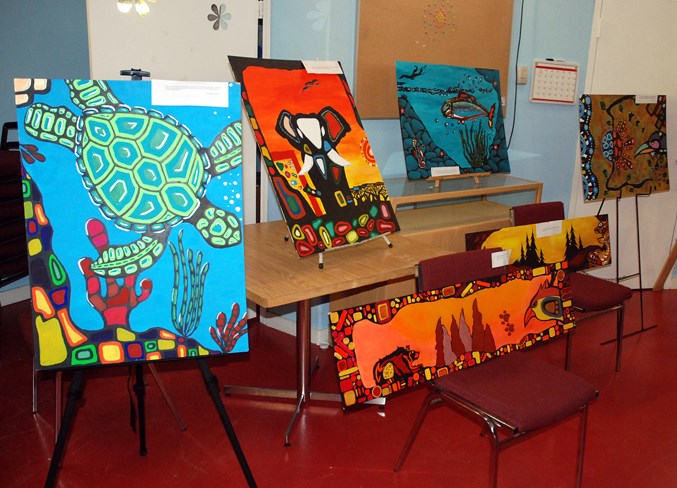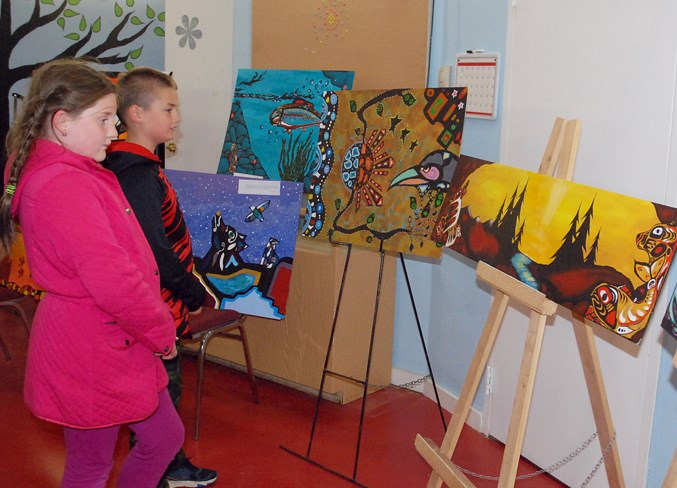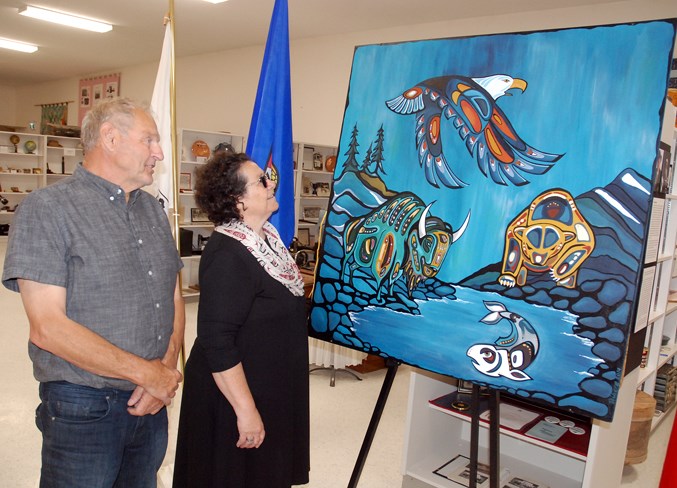Sundre students recently had the opportunity to explore First Nations, Métis as well as Inuit art and culture.
Jane Atkins, who on behalf of the Sundre and District Historical Society board helped to organize activities in recognition and celebration of National Indigenous Peoples Day on Friday, June 21, said about 120 students from River Valley School in grades 2-7 attended.
The recently retired educator of 43 years said cultural rapprochement is an important part of honouring the history of the people who already had deeply embedded roots on the continent long before European settlers ever arrived.
“It gives awareness to different aspects of First Nations, Métis, Inuit — of all Indigenous peoples,” Atkins said about events such as those hosted at the museum, adding the students, and members of the public who also attended, were also introduced to new concepts.
“Each of the activities that we did related a way of life.”
When asked why they were attending, the students expressed an understanding of the intent behind the event, she said, adding they were also able to explain that it occurred on the summer solstice and why that day was specifically selected for the celebration.
Considering the weather and looming possibility of rain with intermittent bouts of drizzle that day, Atkins said it went way better than she had expected.
Seeing the kids’ faces as they participated in a variety of games and activities, “the joy they had in doing what they were doing even though it wasn’t the nicest day,” was a rewarding experience, she said.
Sundre High School art students also got involved through a project led by teacher Sue Wiberg. She challenged them to create a composition of a creature they felt connected to and to paint a piece in a style similar to the colourfully vibrant and unique work of John Rombough. All of their finished paintings were displayed at the museum.
 Sundre High School art students created a number of paintings in celebration of National Indigenous Peoples Day.
Sundre High School art students created a number of paintings in celebration of National Indigenous Peoples Day.
The opportunity provided to students to build cultural bridges in recognition of reconciliation had the desired effect of helping them to look at life from another perspective, said Atkins.
Sundre is situated on Treaty 6 and 7 territories, traditional meeting grounds and travelling routes to many First Nations and Métis people with a lengthy history in the region. On the west side of the Red Deer River, to the north and west of Sundre, is Treaty 6, which has been home to the Cree, while the other side of the river to the south and east of town, Treaty 7, has been home to the Blackfoot and Stoney Nakoda, she said.
National Indigenous Peoples Day at the museum started off with an opening ceremony and blessing, including a few words from Mayor Terry Leslie.
“Recognizing the land is an expression of respect and gratitude,” said Leslie.
“Traditionally, Indigenous people have had, and still do have, a strong connection to the land. Traditional knowledge, language, cultural practices and oral traditions all have a connection to the land because they were born out of the land, touched by the sea, the air and all creatures that live in these spaces,” he said.
“Today, we have an opportunity for all treaty people, both Indigenous and non-Indigenous, to come together and celebrate,” the mayor said, reading from a message shared by Brenda Holder, chair of Indigenous Tourism Association of Canada and chair of Indigenous Tourism Alberta.
 River Valley School Grade 3 students Annalea Long and Drake Weatherbee check out a number of paintings created by Sundre High School students in celebration of National Indigenous Peoples Day. The horizontal piece to the right depicting a golden sunset with silhouetted pine trees flanked by spirit animals was created by Art 20 student Cassandra Kopp. For her effort, she won an Indigenous art contest hosted by the Sundre and District Museum. Simon Ducatel/MVP Staff
River Valley School Grade 3 students Annalea Long and Drake Weatherbee check out a number of paintings created by Sundre High School students in celebration of National Indigenous Peoples Day. The horizontal piece to the right depicting a golden sunset with silhouetted pine trees flanked by spirit animals was created by Art 20 student Cassandra Kopp. For her effort, she won an Indigenous art contest hosted by the Sundre and District Museum. Simon Ducatel/MVP Staff



